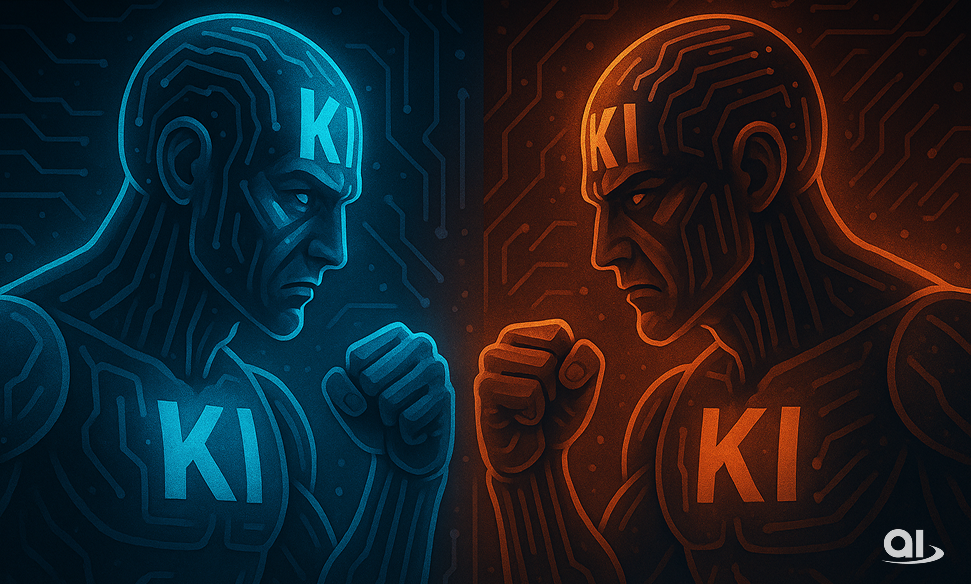Open-Source AI vs. Big Tech Models

Reading time:
minutes
Artificial intelligence is evolving rapidly—but who controls its direction? In 2025, the debate between open-source AI and proprietary Big Tech models is intensifying. On one side are companies like OpenAI, Google, and Meta with highly advanced but closed systems. On the other side, initiatives such as Mistral, Hugging Face, and OpenEuroLLM are developing freely accessible alternatives.
For companies—especially in marketing—the choice between open and commercial models becomes a strategic decision: is the priority adaptability, data privacy, and independence, or rather performance, convenience, and scalability?
What distinguishes the two approaches?
Open-source models like Mixtral, LLaMA, or Falcon are freely usable, locally deployable, and customizable. In contrast, models such as GPT-4o or Claude are accessed via APIs and typically run only in the cloud.
Big Tech models are often more powerful and multimodal (text, image, speech), while open-source options offer transparency and greater control—ideal for organizations handling sensitive data or with specific technical requirements.
How do marketing teams use both approaches?
In practice, both types of models have their place.
A global company might use GPT-4o to automatically generate ad copy in over 30 languages, integrated into its content platform. Meanwhile, a software provider may operate an open-source Mixtral-based model trained on internal sales data to generate personalized emails in a GDPR-compliant way.
The choice often depends on the desired level of control and the sensitivity of the data involved.
Pros and cons of each approach
Big Tech advantages:
- High performance and multimodal capabilities
- Regular updates and features
- User-friendly interfaces and native integrations
- Scalable without internal infrastructure
Open-source advantages:
- Full control over deployment and data
- Customizable to internal use cases and branding
- No dependency on cloud availability or API costs
- Local, GDPR-compliant operation possible
Challenges:
- Open-source models often need more technical expertise
- Commercial models can lead to vendor lock-in and higher costs
The best option depends on company size, industry, and data protection needs—or may be a mix of both.
Outlook for 2025
A clear trend in 2025 is the coexistence of both models. Many large companies use a hybrid approach, combining commercial services with in-house open-source models. For example, campaign segmentation may run locally, while creative copy comes from GPT-4o.
New tools like Hugging Face Hub for Teams, Mistral Cloud, or OpenGPT-X make open-source solutions more accessible—complete with UIs, APIs, and monitoring—lowering barriers even for smaller marketing teams.
Long-term, hybrid setups are likely to dominate: centralized services for general use, and internal models for brand-specific or sensitive tasks.



